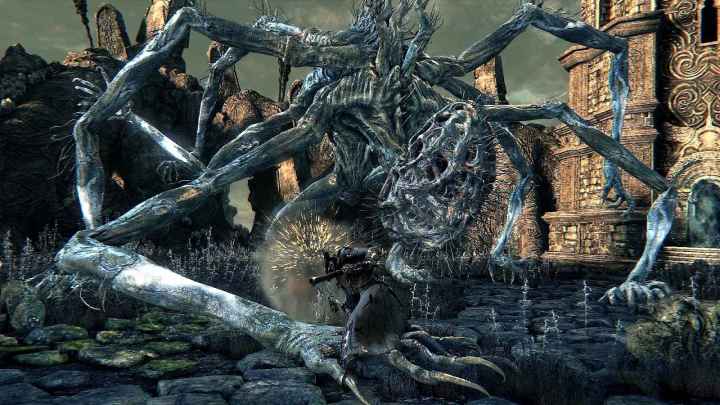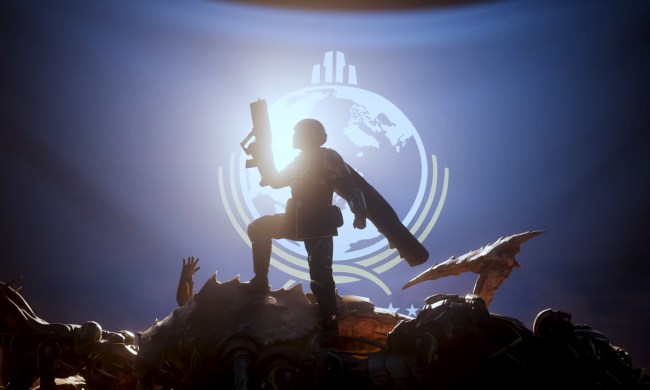Horror comes in all different shades. Whether it is spooky ghosts and zombies or the more mundane fear of opening your mailbox. Like all other forms of mediums, video games have tried to capture the many flavors of horror to varying success. Lovecraftian horror seems to be one type of horror that video games have difficulty getting their heads around. This genre is a slithering unknowable glob that tends to slip through the hands of game developers.
Lovecraftian horror is by no means a mountain of madness that is impossible to climb. There are examples of video games that do in fact capture the essence of this existential dread. Unlike other mediums games have the ability to use gameplay and player actions as another aspect of conveying themes.

Knowing the Unknown
Let’s start by trying to define what Lovecraftian horror actually means. That’s trickier than you might imagine. The surface answer is any horror crafted by author H.P. Lovecraft and other writers that contributed to the mythos. Cosmic horror is also tied closely to Lovecraftian horror, the concept of great unknowable forces that make the human characters and perspective feel small and insignificant. Yog-Sothoth and the better-known C’thulu are strong examples of cosmic horror.
However, Lovecraft’s The Reanimator and The Case of Charles Dexter Ward do not have true cosmic horror in them, but are clearly still Lovecraftian in nature. Lovecraftian horror is best described as transgressive horror, which uses themes of the unknown, hopelessness, and dread to violate the rules of safety and the mundane.
Transgressive horror is hard to convey in video games because video games by their nature are a system of strict rules. How can a demon in Shin Megami Tensei 3 be an existential horror when it has a health bar? The unknown xenomorph in Alien Isolation becomes known and familiar once the player learns its patterns. Despite the game telling players it is hopeless to fight against a giant mold monster in Resident Evil 7 an automatic gun reassures the player that this fight will be over in five minutes. How can the player feel insignificant if the player is playing as the main character of a story?
There are still ways that games can invoke Lovecraftian horror while still maintaining the rules and systems it exists in. Many games opt to use aesthetics to convey fear. The Sinking City, Eldritch, and Call of Cthulhu: Dark Corners all use Lovecraftian monsters and visuals to inspire horror. Unfortunately, these games lose that Lovecraftian feeling once fingers hit keyboard, so to speak. The gameplay betrays that sense of dread and horror — especially Dark Corners where you fight against many monsters and creatures of the Lovecraft mythos with arcade-like shooting sections.
That’s the most important part of video games: gameplay. Player interaction is something wholly unique to games compared to other mediums and must be capitalized on. While many fail, there are some games that understand this and incorporate gameplay when creating Lovecraftian tones in their games.

Champions of Darkness
Bloodborne is probably the first that comes to mind when talking about games that get it right. Narrative-wise, the game is filled with references to Lovecraft and the Old Ones are a perfect stand-in for the Outer Gods, Ancient Ones, and the whole other slews of pantheons in the Lovecraft mythos. Even the church and their excessive use of the Old Ones’ blood is dripping with proper tone and themes.
The aesthetics are also on point Bloodborne. The Victorian-inspired setting of Yharnam is a familiar and comfortable setting that we are used to for horror. Mixing in the ungodly abominations the player fights feels properly transgressive on the tropes of a gothic horror story. All of this is emphasized by the gameplay. Bloodborne’s action mechanics often do not make players feel empowered, it usually emphasizes how weak they actually are. Depending on the player’s skill level, even the run-of-the-mill enemies can be impossible to face. Yharnam is filled with traps and ambushes which gives players a sense of dread and paranoia whenever they are venturing out in the city. Even the Insight mechanic unravels more of the mystery of Bloodborne.

World of Horror is also a game that handles the themes of Lovecraftian horror well. Its old-school graphics make it stand out among its competitors. It feels like a game that should be on the original Gameboy, which makes the creature designs inspired by Lovecraft and Junji Ito all the more terrifying to witness.
The gameplay itself works incredibly well with Lovecraftian horror, because it is a game that many players will not complete. The game is structured like a board game, with every new playthrough having different win conditions and monsters to face — think Arkham Horror. While managing health and sanity the player must go around the map to solve mysteries that will reward them with keys that will unlock the final boss.
The brilliant thing about World of Horror is its use of failure as a mechanic. Like in some games, when you fail, you have to start all over again. Nothing carries over from past games so the only thing the player brings with them is knowledge of past failures. There will be many runs where success is impossible. Perhaps the player doesn’t have enough health or sanity to finish the remaining fights, or a much-needed item is locked away because of lack of resources. The inescapable feeling of dread and potential failure constantly follows the player throughout each playthrough.
Making a video game Lovecraftian is certainly very hard, and I don’t intend to dissuade people from games that borrow themes and aesthetics from the genre. Heck, if there is a skin in a game that has tentacles on the face I am absolutely getting it. However for a game to be truly Lovecraftian it must be transgressive. It must feel almost wrong to play at times. It must make us question things that we take for granted.
The only way for the unknown to scare us is to be truly unknown.



